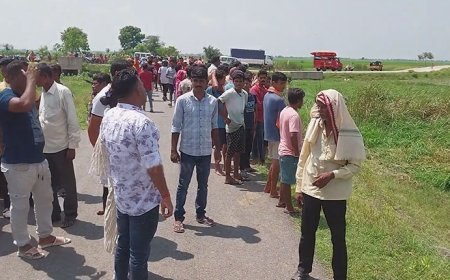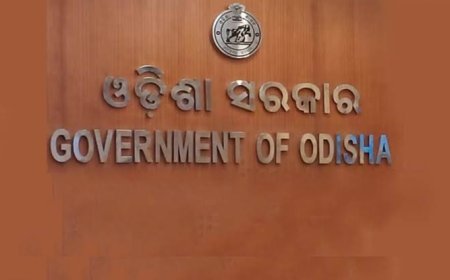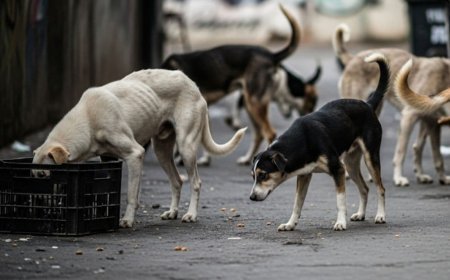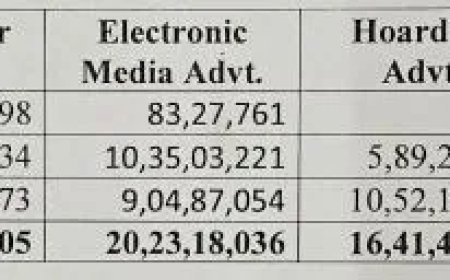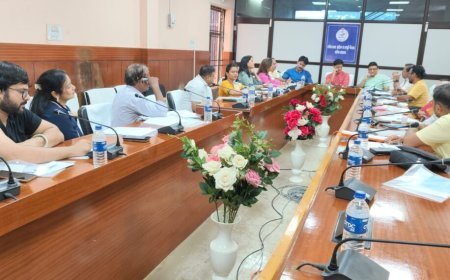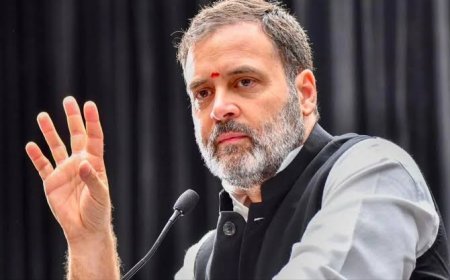COVID-19 Cases See Fresh Rise: Kerala, Tamil Nadu, and Maharashtra Top the List Cover by News12 Odisha
India sees a fresh rise in COVID-19 cases, with Kerala leading. Odisha stays alert with preventive steps amid low case counts. Stay updated with News12Odisha.
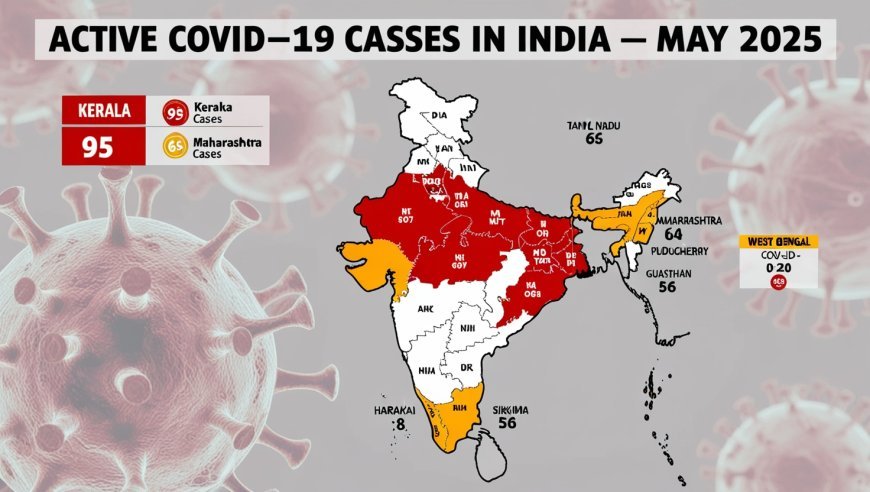
COVID-19 Returns with Localized Uptick Across India
India, which had been enjoying a sustained drop in COVID-19 cases over recent months, is now witnessing a renewed increase in infections across several states. Although the figures are relatively low compared to previous waves, this resurgence signals that the pandemic is not completely behind us.
As per the latest update from the Ministry of Health and Family Welfare, a handful of states are recording noticeable spikes, with Kerala reporting the highest number of active cases, followed by Tamil Nadu and Maharashtra. This recent trend, highlighted in a viral Instagram post by RVCJ Media, is prompting health authorities to ramp up preventive measures.
States like Odisha, which have not yet recorded new cases in this resurgence, are taking this as a signal to remain alert. Health experts suggest that a proactive stance is crucial in avoiding a repeat of previous outbreaks.
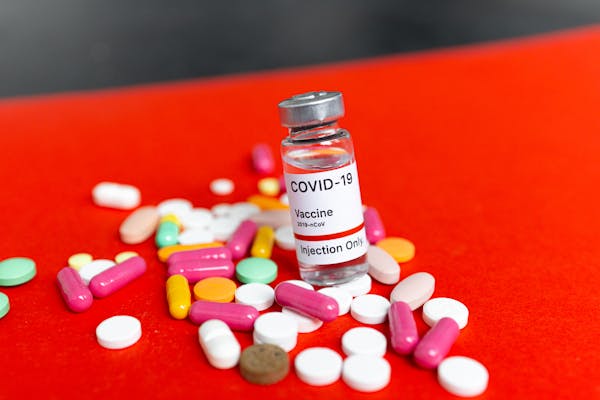
COVID-19 Case Count: A State-by-State Overview
Here’s a detailed look at the current active case distribution in India:
-
Kerala: 95 active cases
-
Tamil Nadu: 66 cases
-
Maharashtra: 56 cases
-
Karnataka: 13 cases
-
Puducherry: 10 cases
-
Gujarat: 7 cases
-
Delhi: 5 cases
-
Rajasthan: 2 cases
-
Haryana, Sikkim, and West Bengal: 1 case each
While these numbers are far from the overwhelming figures seen during earlier waves, they are enough to trigger concern among healthcare professionals and government agencies.
Kerala Once Again in Focus
Kerala, known for its robust health infrastructure and rigorous testing protocols, is currently leading the country with 95 active cases. Health authorities there attribute the spike to increased local testing, return of seasonal flu-like symptoms, and possible community transmission linked to festivals and public gatherings.
Measures currently in place include:
-
Heightened monitoring of symptomatic cases
-
Reactivation of COVID-specific health centers
-
Promotion of mask-wearing and booster vaccination campaigns
Kerala’s proactive approach may explain both the high detection rate and the containment of more severe consequences so far.
Tamil Nadu and Maharashtra: Growing Urban Concerns
Tamil Nadu follows closely with 66 cases, with reports of localized clusters in cities like Chennai, Coimbatore, and Madurai. Officials have issued health advisories and are urging citizens to follow precautionary measures, particularly in crowded places.
Meanwhile, Maharashtra, which bore the brunt of multiple COVID-19 waves in the past, is again grappling with an increase in cases. This time, the clusters are emerging predominantly in major urban pockets such as Mumbai and Pune, where population density and high mobility rates increase the risk of spread.
Public health departments in Maharashtra have reactivated district COVID response teams, reviewed stock levels of essential medicines, and reinstated hospital-level preparedness drills.
Smaller Surges in Other States
Other regions, including Karnataka (13 cases), Puducherry (10), and Gujarat (7), are also reporting new cases. These are being monitored closely by respective state health agencies, who are conducting contact tracing and localized testing.
Delhi and Rajasthan have reported 5 and 2 active cases respectively. In Haryana, Sikkim, and West Bengal, only a single active case has been identified in each state. While these figures are low, they emphasize the need for ongoing vigilance and rapid containment efforts.
Odisha’s Situation: No New Cases, But Proactive Monitoring Continues
Odisha, as per current data, has not reported any new active COVID-19 cases. Despite the zero-case scenario, the State Health Department is not taking chances. Officials have been directed to remain on high alert and sustain the infrastructure built during earlier phases of the pandemic.
In line with this, the Odisha Health Department has issued directives to all district hospitals to enhance their monitoring mechanisms and prepare for any possible surge. Among the key instructions are:
-
Strengthening surveillance systems at public transit hubs like airports and railway stations
-
Reviewing oxygen availability, ventilator functionality, and critical care unit readiness
-
Ensuring availability of booster doses in government and private vaccination centers
-
Training frontline workers to detect early symptoms and refer patients promptly
The state's swift response and grassroots-level coordination have been instrumental in keeping infection numbers low thus far.
Why Are COVID-19 Cases Resurfacing?
The mild resurgence in COVID-19 cases across multiple states may be attributed to a combination of social, environmental, and epidemiological factors:
1. Complacency in Public Behavior
With the prolonged period of low case counts, many citizens have grown lax in following COVID-appropriate behavior. The decline in mask usage, crowded social events, and unchecked travel are all contributing to a higher risk of transmission.
2. Climatic Conditions
Shifts in seasonal patterns—especially the rise in humidity and pre-monsoon rains—have contributed to an increase in respiratory illnesses, making people more susceptible to viral infections including COVID-19.
3. Mutation of the Virus
Though no new dangerous variant has been officially flagged by WHO or ICMR, minor mutations continue to emerge. These may cause milder symptoms but still possess the ability to spread rapidly.
4. Travel and Mobility
International and inter-state travel has resumed in full force, often without stringent checks. The increase in tourist traffic and domestic migration increases the risk of introducing the virus into communities that had remained unaffected.
Vaccination and Booster Coverage: Time to Pick Up Pace
India’s historic vaccination campaign covered a vast portion of the population during the first two waves. However, the uptake of booster (precautionary) doses has been slower than expected, particularly among people aged 18–60.
Health officials are pushing to:
-
Increase booster dose awareness
-
Facilitate mobile vaccination camps in rural and semi-urban areas
-
Encourage vulnerable groups to receive their due doses
Odisha’s earlier success in widespread vaccination can be a model once again if efforts are ramped up in time.
Healthcare Strategy and Government Preparedness
The Union Health Ministry has advised all states and Union Territories to remain prepared for any potential surge. Steps being prioritized include:
-
Randomized testing in high-footfall public places
-
Sample genome sequencing to monitor new variants
-
Updating hospital and ICU protocols
-
Mock drills to test oxygen supply systems and emergency response logistics
State governments, including Odisha, are also encouraged to engage local communities through ASHA workers, Gram Panchayats, and school outreach programs.
Public Cooperation: A Crucial Pillar
Even as administrative machinery gears up for any eventualities, the role of citizens remains irreplaceable. Everyone has a part to play in keeping the virus at bay. Public health authorities urge individuals to:
-
Continue wearing masks in enclosed and crowded areas
-
Avoid self-diagnosing or ignoring symptoms
-
Keep vaccination certificates updated
-
Maintain hygiene and respiratory etiquette
-
Be wary of rumors and depend on credible information sources
Media’s Duty in This Phase: Spreading Facts, Not Fear
In this critical stage of pandemic recovery and response, the media must shoulder the responsibility of spreading verified information. At News12Odisha.com, we remain committed to publishing accurate, science-backed updates that help our readers stay informed, not alarmed.
Whether it’s covering local health advisories, debunking fake news, or promoting awareness about booster shots, our goal is to support a safer, healthier Odisha.
Learning from the Past, Preparing for the Future
India’s fresh wave of active COVID-19 cases—though relatively small—is a timely reminder that the pandemic may be down, but it is not out. States like Kerala, Tamil Nadu, and Maharashtra are facing local surges, while Odisha remains in a precautionary mode.
What this moment demands is not panic, but preparation.
By learning from the past and reinforcing our public health systems, we can ensure that a few isolated cases do not snowball into a full-blown crisis. The virus is evolving, and our strategies must evolve with it.
Odisha has a golden opportunity to maintain its safe status by acting swiftly and maintaining public discipline.
What's Your Reaction?








